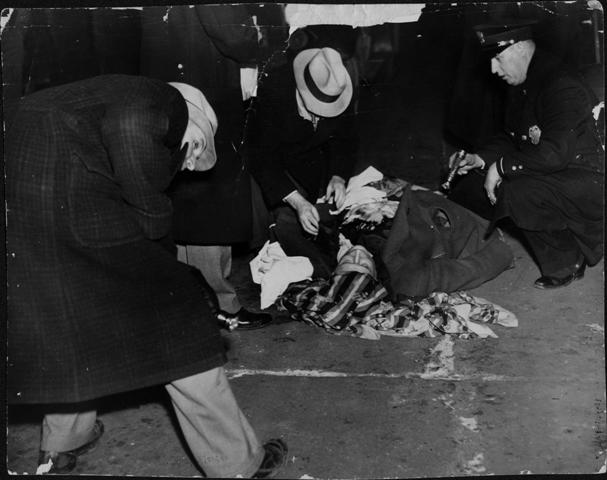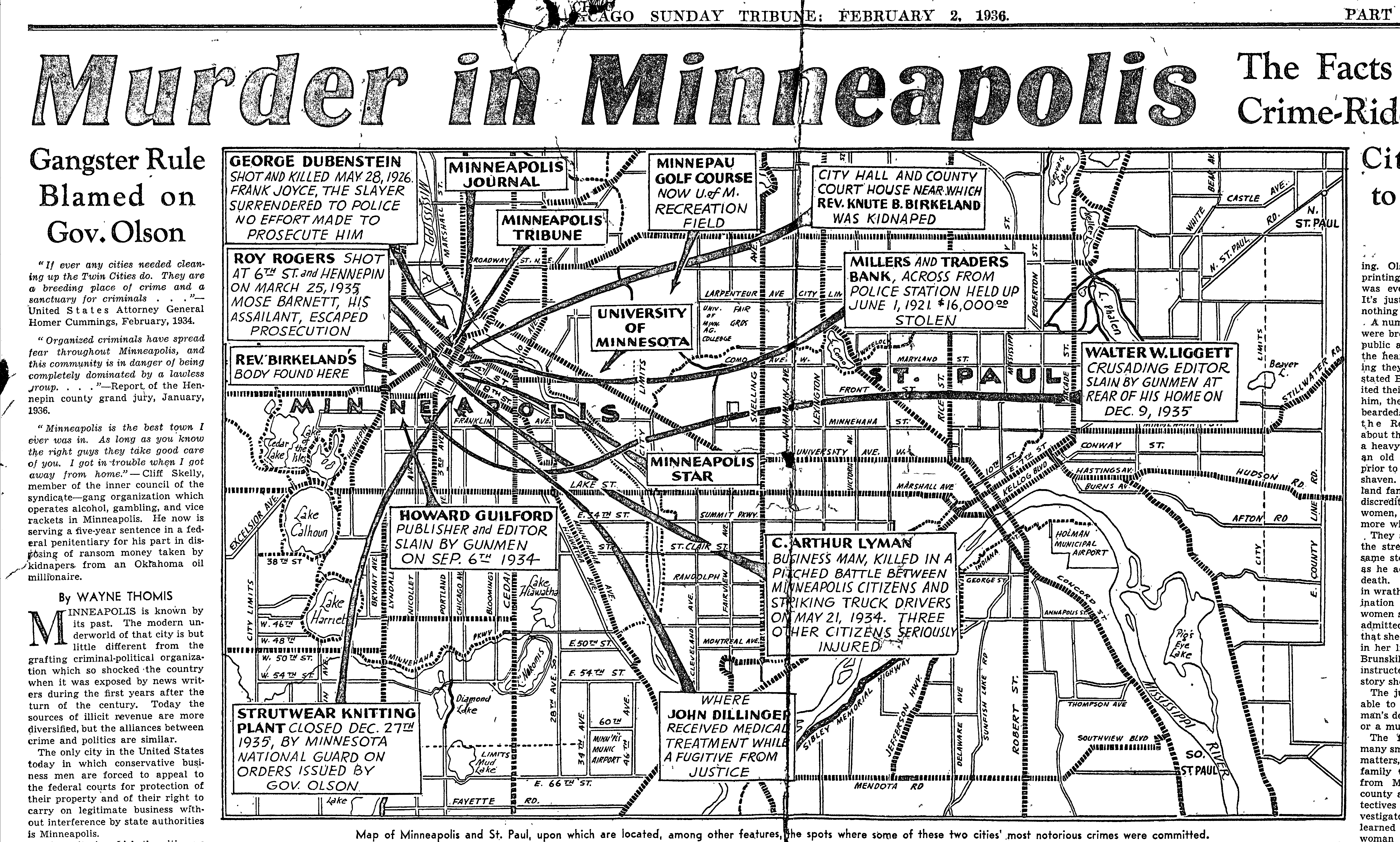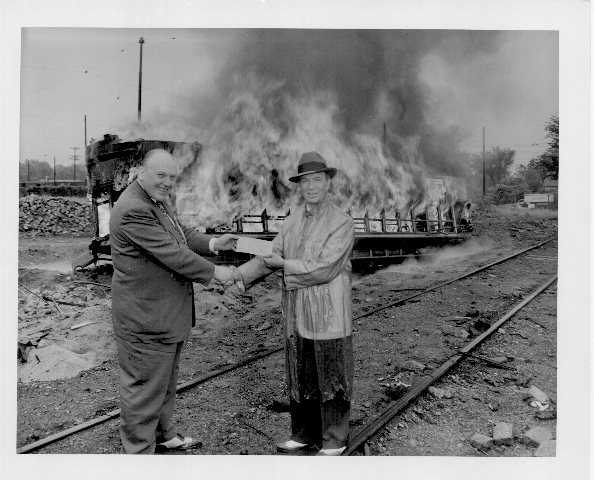organized crime


Murder in Minneapolis, 1936
It’s map Monday.
Published by the Chicago Tribune in 1936, this “Murder in Minneapolis” map was designed to illuminate “the Facts about a Crime-Ridden City.” Compiled as the city hit bottom, the diagram reflects the town’s unsavory reputation in 1936. Between the Teamsters’ strike of 1934 and 1946–when Minneapolis earned the ignominious title of “anti-Semitism” capital of the United States–the city was regarded with fascinated horror by the rest of the country. One report after another declared that Minneapolis was beyond repair–its economy in tatters, its social relations poisonous, and its criminal element unchallenged. In the article accompanying this diagram, Tribune reporter Wayne Thomis wondered: “Why is it that the decent-law-loving men and women who live in that city and state do not take some bold direct action to eliminate gangsters, gang lawyers and hoodlum-befriending politicians?”
This “expose” of Minneapolis was compiled by the conservative Chicago Tribune, which laid responsibility for the city’s lawlessness at the feet of the state’s political radicals. The accompanying article was a screed against Minnesota’s Governor Floyd B. Olson, who grew up on the Northside of Minneapolis and went on to become District Attorney of Hennepin County before winning the governorship. In the early years of the Great Depression, Olson became nationally known for his fiery radicalism, declaring in 1934: “I am not a liberal. I am what I want to be — a radical.” He was seen as presidential material in 1936, a challenge from the left to Franklin Delano Roosevelt. Conservatives (including Tribune publisher McCormick) hated him for his radical rhetoric, though he governed pragmatically until he died prematurely from stomach cancer, seven months after this article was published.
The map highlighted some of the deaths associated with the labor violence that had rocked the city since the global economic collapse. The article and accompanying graphic also detailed a series of murders that were blamed on local mobsters, including those of crusading journalists Walter Liggett and Howard Guilford, who sought to expose the connections between the state’s political and underworlds.

Streetcars in Minneapolis: Now and Then
The city has decided to invest millions to build new streetcar lines. Which beggars the question, what happened to our old streetcar system? It met its demise in June of 1954, when this sinister-looking photo was taken. This image records the celebration organized by the Twin City Rapid Transit Company, when it declared streetcars to be relics of the past. On this early summer day, the company actually burned streetcars –like the one in the background–to demonstrate its commitment to progress and innovation. The men in this photo were celebrating the purchase of 525 buses, which had been financed with liberal terms from General Motors. This allowed them to discard the streetcars and dispose of assets necessary to maintain the rail network. This image shows TCRT treasurer James Towey handing a check (from NSP for the company’s Main Steam Station) to company president Fred Ossanna, who was later investigated for shady business dealings and political bribes.
Photograph Credit: Minneapolis collection, Hennepin County Central Library.